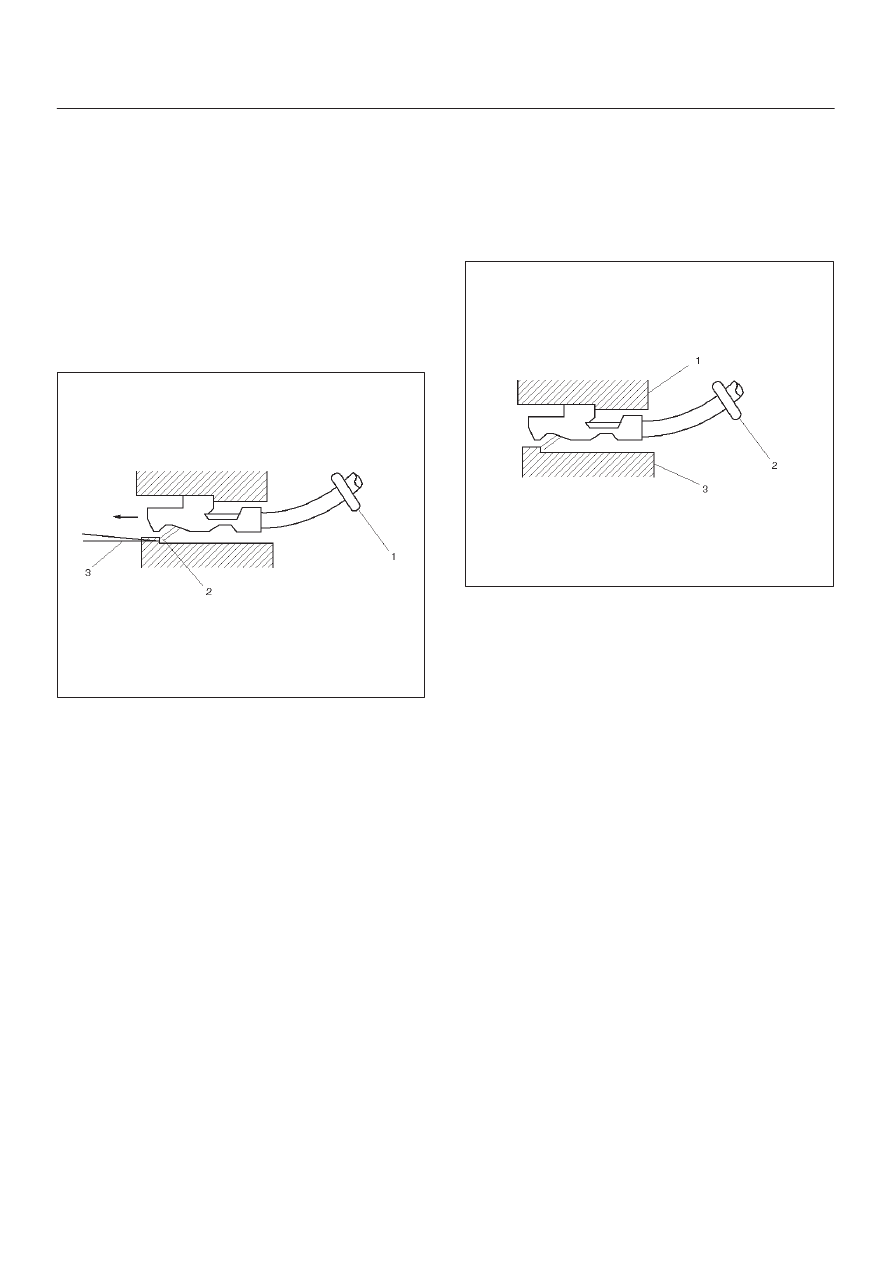Isuzu Amigo / Axiom / Trooper / Rodeo / VehiCross. Manual - part 882

6E–552
TROOPER 6VE1 3.5L ENGINE DRIVEABILITY AND EMISSIONS
Metri-Pack
Tools Required
J 35689 Terminal Remover
Removal Procedure
Some connectors use terminals called Metri-Pack Series
150. These may be used at the engine coolant
temperature (ECT) sensor.
1. Slide the seal (1) back on the wire.
2. Insert the J 35689 tool or equivalent (3) in order to
release the terminal locking tang (2).
060
3. Push the wire and the terminal out through the
connector. If you reuse the terminal, reshape the
locking tang.
Installation Procedure
Metri-Pack terminals are also referred to as “pull-to-seat”
terminals.
1. In order to install a terminal on a wire, the wire must be
inserted through the seal (2) and through the
connector (3).
2. The terminal (1) is then crimped onto the wire.
061
3. Then the terminal is pulled back into the connector to
seat it in place.